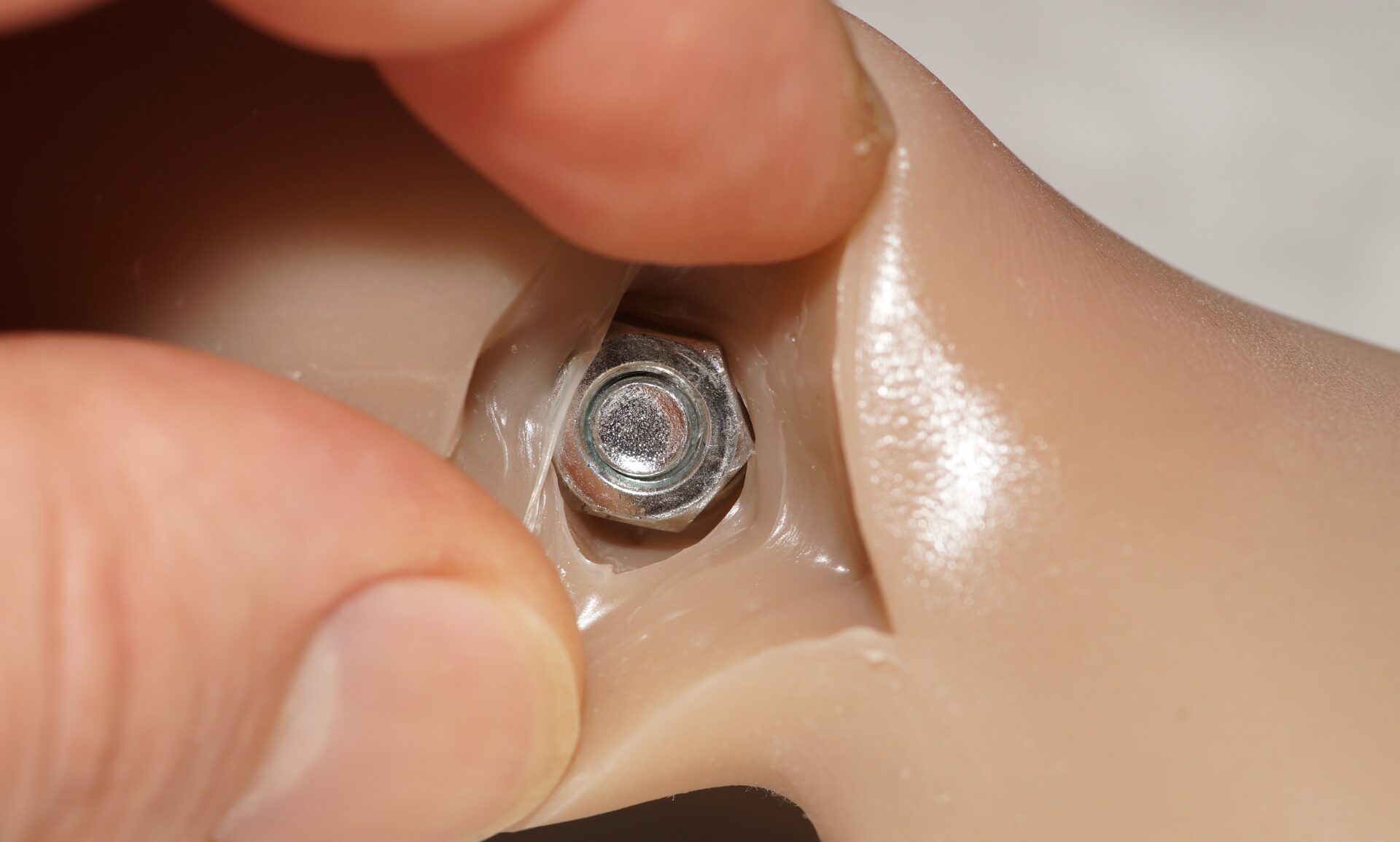The feeling of seeing a cherished possession in less-than-perfect condition can be disheartening. But trust me, it’s not the end of the world. Everything that is damaged or broken can be repaired. Even when it comes to how to repair love sex dolls?
By diving deep into this article, you’ll not only learn how to repair love sex dolls, but you’ll also gain knowledge on maintaining them to prevent future damage. Think of it as a masterclass in doll care.
For those in a rush: This guide covers repairing cracks in composition dolls, fixing porcelain dolls, and general maintenance tips. With the right tools and patience, you can restore your doll to its former glory. Alright, ready to get started? Let’s dive in!

Understanding the Different Materials
Composition Dolls
Composition dolls are made from a mixture of sawdust, glue, and other materials, creating a malleable compound. This was a popular method of doll-making in the early to mid-20th century, before the advent of plastics.
Thus, composition dolls are prone to:
- Cracking: Changes in temperature and humidity can cause the material to expand and contract, leading to cracks.
- Crazing: Tiny, spider-web-like cracks that can appear over the surface.
- Chipping: The outer layer can chip off, especially around the edges or joints.
- Wear: Over time, the paint and finish can wear off, especially on frequently touched areas like the face or hands.
Pain Point: Due to their age and the nature of their materials, composition dolls can be particularly fragile. Handle with extra care!
Silicone and TPE Dolls
These are the most popular types of love sex dolls. This is due to their remarkable resemblance to human beings. Both silicone and TPE (Thermoplastic Elastomer) are modern materials used in doll-making, but they have distinct characteristics:
Silicone: A synthetic material that’s smooth to the touch and slightly sticky. It’s more durable and retains its shape well.
TPE: Softer and more stretchy than silicone, TPE feels more lifelike. However, it’s more porous and can be prone to staining.
For both silicone and TPE dolls:
- Tears: Especially at the joints or any stress points.
- Stains: Due to the porous nature of TPE, it’s more susceptible to staining than silicone.
- Discoloration: Over time, both materials can discolor, especially when exposed to direct sunlight.
- Surface Stickiness: Oils and other residues can make the doll’s surface sticky.
Pain Point: Silicone and TPE dolls can be quite an investment. Without proper care, they can degrade faster than one might expect. Regular maintenance is key!
How to Repair Cracks in Composition Dolls
Identifying the Damage
Spotting damage early on is crucial to prevent further deterioration. Here’s how you can identify common issues:
- Visual Inspection: Start by examining the doll in good lighting. Look for visible cracks, crazing, or chipping. Often, these damages start small and can be easy to miss.
- Touch Test: Gently run your fingers over the doll’s surface. Sometimes, you can feel irregularities before you can see them.
- Joint Movement: Carefully move the doll’s limbs. If there’s resistance or an unusual sound, it might indicate internal damage.
Materials Needed
To effectively repair a composition doll, you’ll need the right tools and materials. Here’s a basic list to get you started:
- Putty or Wood Filler: This will fill in any cracks or chips. Ensure it’s paintable.
- Fine-grit Sandpaper: For smoothing out the repaired areas.
- Acrylic Paints: To touch up areas where the paint has chipped off or faded.
- Soft Brushes: For both cleaning and painting.
- Mild Soap and Water: Clean the doll before starting the repair.
- Clear Acrylic Sealer: To protect the repaired areas and give a uniform finish.
Step-by-Step Repair Process
Before any repair, it’s essential to start with a clean slate:
- Dampen a Soft Cloth: Dampen a soft cloth using lukewarm water mixed with a drop of mild soap.
- Gently Clean: Wipe the damaged area, ensuring you remove any dirt, grime, or old paint flakes.
- Dry Thoroughly: Using another soft cloth, pat the area dry. Ensure no moisture remains.
- Pain Point: A dirty surface can prevent repair materials from adhering correctly, leading to a less effective repair.
Filling the Cracks
Now, let’s get to the heart of the repair:
- Choose the Right Filler: Opt for a paintable putty or wood filler. This ensures you can seamlessly blend the repair with the rest of the doll.
- Apply the Filler: Using a spatula or a flat-edged tool, gently fill in the cracks. Ensure the filler is level with the doll’s surface.
- Let it Set: Allow the filler to dry based on the product’s instructions. This might vary, but often, it’s best to leave it for several hours or overnight.
Sanding and Painting
With the cracks filled, it’s time to make the repair invisible:
- Smooth it Out: Once the filler is dry, use fine-grit sandpaper to sand the area gently. This ensures a smooth surface that’s consistent with the rest of the doll.
- Match the Color: Using acrylic paints, try to recreate the original color of the doll. This requires mixing and testing.
- Paint Over the Repair: With a soft brush, apply the paint over the repaired area. Let each coat dry before deciding if another is needed.
Sealing the Repair
To protect your hard work:
- Apply a Clear Sealer: Once you’re satisfied with the paint job, use a clear acrylic sealer to protect the repair. This also gives a consistent finish across the doll.
- Let it Dry: Allow the sealer to dry thoroughly before handling the doll.
Skipping the sealing step can leave the repair vulnerable, potentially leading to more damage in the future.
With patience and attention to detail, repairing cracks in composition dolls can be a rewarding process. By following these steps, you can ensure your beloved doll remains a treasured keepsake for many more years.
Explore the Boundaries of Pleasure!
Repairing Silicone and TPE Dolls
Identifying the Damage
Silicone and TPE dolls, while durable, aren’t immune to wear and tear. Here’s how to identify potential issues:
- Visual Inspection: Examine the doll under good lighting. Look for any visible tears, punctures, or discolorations.
- Touch Test: Gently stretch the material in suspect areas. Tears or weak spots might become more apparent.
- Feel for Texture Changes: Damaged areas might feel stickier or rougher than the rest of the doll.
Materials Needed
To effectively repair silicone or TPE dolls, you’ll need:
- Silicone or TPE Repair Kit: These kits often come with patching material and adhesive specifically designed for the material.
- Mild Soap and Water: For cleaning the damaged area.
- Soft Cloth: For drying and cleaning.
- Fine-grit Sandpaper: To smooth out the repaired area, if necessary.
- Matte Finish Sealer (optional): To restore the texture and finish.
Step-by-Step Repair Process
Cleaning the damaged area
- Clean the damaged area gently using mild soap and water to remove dirt or oils.
- Dry thoroughly with a soft cloth.
Patching and sealing
- Cut a patch from the repair kit slightly larger than the damaged area.
- Apply the adhesive to the patch and place it over the tear or puncture, ensuring it adheres well.
- Allow the adhesive to dry completely, as per the kit’s instructions.
Restoring the texture and finish
- If the repaired area feels rough or raised, gently sand it with fine-grit sandpaper until it matches the surrounding texture.
- You can apply a matte finish sealer for a more natural finish, especially for TPE dolls. This will help blend the repaired area with the rest of the doll.
General Maintenance Tips
Cleaning Your Doll
Maintaining the cleanliness of your doll is crucial for its longevity:
- Mild Soap and Water: This combo is your best friend. Use a soft cloth or sponge to clean the doll’s surface gently.
- Avoid Harsh Chemicals: Steer clear of intense detergents or solvents that can degrade the material.
- Rinse Well: Ensure all soap residues are washed off.
- Dry Thoroughly: Use a soft towel to pat dry. For TPE and silicone dolls, ensure no moisture is trapped in crevices as it can lead to mold growth.
Storing Your Doll
Storage plays a pivotal role in preserving your doll’s condition:
- Cool, Dry Place: Avoid areas with high humidity or extreme temperatures.
- Avoid Direct Sunlight: Prolonged exposure can cause discoloration.
- Lay Flat or Use a Stand: For heavier dolls, laying them flat can prevent stress on joints. Alternatively, use a stand designed for dolls.
- Loose Clothing: If storing your doll in clothing, ensure it’s loose-fitting to prevent any pressure points or staining.
Avoiding Common Damages
Handling your doll with care can prevent many common damages:
- Lift with Both Hands: Always support the doll’s weight evenly, especially when moving or repositioning.
- Avoid Sharp Objects: Avoid anything that might puncture or tear the material.
- Limit Exposure to Dyes: Dark-colored clothing or materials can stain silicone and TPE dolls.
- Use Compatible Products: If using any lotions or products on the doll, ensure they’re compatible with its material.
Conclusion
In the world of love sex dolls, proper care and maintenance are paramount. Whether you’re dealing with the vintage charm of composition dolls, the delicate beauty of porcelain, or the modern allure of silicone and TPE dolls, understanding their unique needs is crucial.
Regular cleaning, mindful storage, and gentle handling can prevent common damages.
But restoration is within reach if wear and tear occur, with the right tools and a bit of patience. Remember, these dolls are more than just objects; they’re cherished possessions, and with the proper care, they can remain pristine for years to come.




